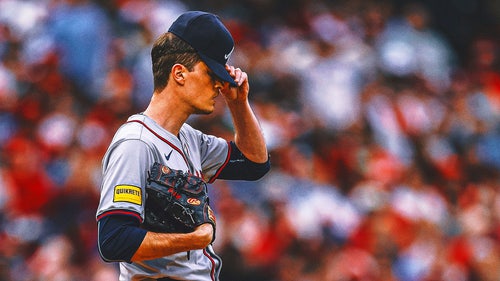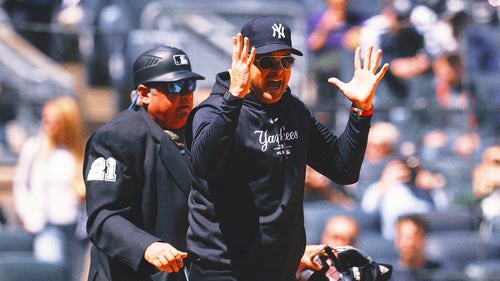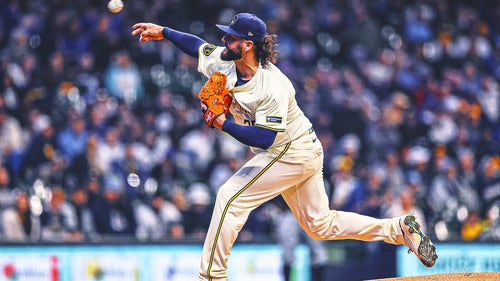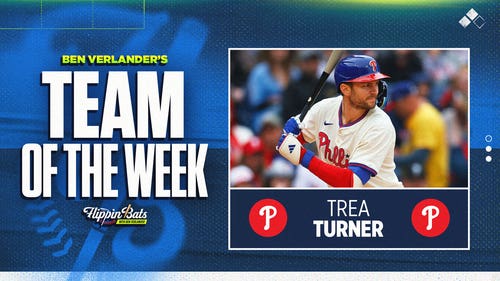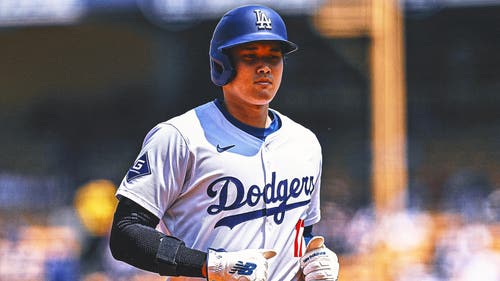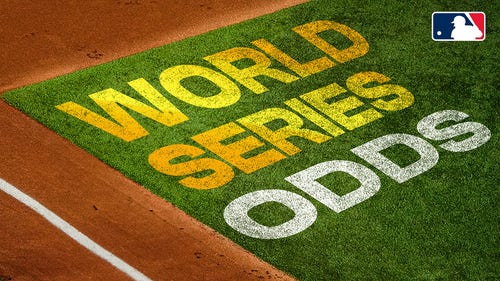
St. Louis Cardinals: A Look at Kevin Siegrist's Development
Jeff Curry-USA TODAY Sports
Kevin Siegrist has inserted himself as one of the St. Louis Cardinals most depended-upon relievers since debuting in 2013, but he is not without significant and troublesome weaknesses.
At a glance, Kevin Siegrist looked like one of the St. Louis Cardinals’ most dependable relievers in 2016. He was third in innings pitched among Cardinals relievers with 61.2 and fifth with a 2.77 ERA. Manager Mike Matheny relied upon Siegrist late in games and, for the most part, Siegrist delivered.
However, Siegrist’s success in 2016 was supported by unrepeatable luck. He registered a .221 BABIP against, which ranked fifth lowest among 135 qualified relievers. Additionally, his 89.1% strand rate (LOB%) ranked fifth highest among the same set of relievers. The result was a FIP of 4.43, which was 1.66 runs above his ERA.
If either (or, most likely, both) of these rates regress to even average rates without noticeable improvement in Siegrist’s peripherals, the reliever will likely have a much worse season in 2017. There are obvious reasons for Siegrist’s struggles this past year, namely a depressed strikeout rate and declining fastball velocity. However, I will focus for much of this post on his positive development.
For Kevin Siegrist’s career, he has allowed reverse splits against opposing hitters. This means that left-handed batters (LHH) have hit him better than right-handed hitters (RHH) even though Siegrist throws left-handed. This is the opposite of traditional expectations, and is often attributed to Siegrist featuring a change-up as his second best pitch while being without a quality breaking ball.

St. Louis Cardinals

St. Louis Cardinals
Source: FanGraphs
Siegrist has allowed reverse-splits in every season since 2014. The difference was most drastic in 2015, Siegrist’s best full season, when lefties hit for a .356 wOBA against Siegrist compared to only .227 from RHH. However, Siegrist has improved his overall line against LHH every season since 2014, dropping his wOBA against LHH from .373 in 2014 to .302 in 2016.
I decided to investigate how Siegrist is adapting to combat his reverse-split problem to become a more dependable reliever. As it turns out, the first pitch is the most important for Siegrist against LHH. However, he has had annual trouble locating his fastball to execute his strategy against LHH. Additionally, Siegrist recently modified his curveball, the off-speed pitch he primarily features against lefties.
Following this information, I walk through each of these facets of Siegrist’s attack, analyzing his overall development and comparing his strategy and results versus LHH and RHH.
Jasen Vinlove-USA TODAY Sports
The first pitch is critical against left-handed hitters.
The biggest factor leading to Kevin Siegrist’s reverse splits is the first pitch. The reliever must improve his first pitch execution if he is to succeed for the St. Louis Cardinals.
The importance of a first pitch strike is hard to overstate. In 2016, considering only pitchers with 10+ IP, pitchers allowed a .622 OPS after throwing a first-pitch strike compared to an .825 OPS after missing with a first-pitch ball.
When comparing these splits to the sampled pitchers’ overall OPS against of .749, they were 16.9% better after throwing a first pitch strike and 10.3% worse after a first pitch ball. Clearly, the first pitch is critical for nearly every pitcher.
When looking at Kevin Siegrist’s count splits, however, we see an important distinction. Following are Siegrist’s stats through an 0-1 count versus a 1-0 count, split by batter handedness.

St. Louis Cardinals
Source: FanGraphs
When Siegrist gets ahead with the first pitch against RHH, he has held them on to a .532 OPS. When he falls behind with the first pitch, he has allowed an OPS of .648. This difference is mostly attributable to his 18.1% walk rate after falling behind, compared to only 4.9% upon getting ahead.
In any case, a .116 difference is barely more than half the league average OPS difference of .203. Siegrist remains effective against RHH even after falling behind, which allows him to limit the damage these hitters inflict.
Against LHH, however, there is a much more significant difference. When Siegrist gets ahead in the count against lefties, he has limited them to an average OPS of only .463. This is actually better than his line against RHH, leading to a “normal” split after an 0-1 count.
When he falls behind, though, LHH have an .893 OPS against him. This .430 difference is more than twice the league average of .203 and is the obvious driver behind Siegrist’s overall reverse-splits.
Additionally, Siegrist is especially potent against RHH when he is ahead, striking out 41.1% of RHH when he gets a first pitch called strike. Against LHH, his K% in the same situation is significantly worse.
Furthermore, Siegrist has struggled with walks even when he gets ahead of LHH. This is an obvious indication that, for some reason, he lacks control against lefties. I will explore this topic shortly.
Unfortunately, Siegrist continually puts himself behind in the count more often against LHH than RHH. The table below shows Siegrist’s called first strikes as a percentage of non-batted first pitches (that is, those taken for strikes, balls, or swung at and missed, or fouled off for a strike).

St. Louis Cardinals
Source: FanGraphs
For whatever reason, Siegrist clearly struggles to get ahead in the count against LHH. He has never thrown first pitch strikes to even half of LHH batters faced in a season, and has been more than 10.0% worse against LHH than RHH in three of his four seasons. The smaller difference in 2016 resulted more from his struggles to locate the first pitch against RHH than progress against LHH.
Consequently, Siegrist is behind in the count to LHH more often than against RHH. Without a dependable or effective off-speed pitch to feature against LHH when behind, he struggles. The end result is that Siegrist continually puts himself in the situation where he is least likely to succeed, due to both his location problems and repertoire.
Jeff Curry-USA TODAY Sports
Kevin Siegrist is less effective and more predictable against left-handed batters.
Next, I dove into Kevin Siegrist’s repertoire to examine why he is so much worse for the St. Louis Cardinals when he falls behind in the count to LHH than he is against RHH. To do this, I analyzed Siegrist’s pitch selection, fastball location, and off-speed location.
Pitch Selection
While I’ve mentioned this previously, the main explanation for the drastic difference against lefties compared to the minimal difference against righties is Siegrist’s repertoire. His change-up is by far his best off-speed pitch, but he is unable to use it against LHH. Following are Siegrist’s first- and overall pitch selections versus RHH and LHH.

St. Louis Cardinals
Source: Baseball Savant
Against RHH, Siegrist is able to use his change-up, which is undoubtedly his best off-speed pitch. He locates the pitch extremely well, and can rely on it in any count. This leaves hitters off balance and consequently keeps him in the driver’s seat even when behind in the count to RHH.
Against LHH, Siegrist rarely uses his change-up. Instead, he features a less effective curveball, which is a noticeably worse pitch. While he has committed to using his curveball more against LHH in recent seasons, he is still more predictable when facing LHH. Additionally, a curveball is easier to recognize than a change-up, which allows hitters to stay back on the pitch more often.
Location vs. RHH
Arguably the most important factor behind Siegrist’s success against RHH is how well he executes his pitching strategy. Below, I’ve compiled the reliever’s location heat maps against righties for both his fastball and change-up:

St. Louis Cardinals
Source: Baseball Savant

St. Louis Cardinals
Source: Baseball Savant
Against RHH, Siegrist pounds his fastball on the inner half of the strike zone. Further, over the last two seasons, he has refined this fastball location to a tight core on the low-inside corner to RHH. The result is a pitch that limits the hitter’s ability to get his arms extended.
Additionally, this fastball location is ideal for setting up Siegrist’s change-up. This pitch is best when it fades to the low-outside corner against RHH, epitomized by the 2015 change-up heat map. This pitch comes from the same arm slot as his fastball and, to the RHH, looks just like the fastball that Siegrist pounds inside. However, the fastball continues along this trajectory to the inside corner while the changeup fades away.
Siegrist’s execution of this strategy against RHH is critical to his success against them. When the fastball and change-up are on two different planes, like in 2014, Siegrist is less effective; that year, RHH compiled a .356 wOBA against him. When the pitches stay in the same plane like in 2015, Siegrist is at his best against RHH.
Importantly, Siegrist has no noticeable control issues against RHH. The core of each fastball heat map is within the zone, while the cores of the change-up heat maps lie near the edges of the plate. While the change-up core in 2016 is a bit worrying since it is up in the zone, it is still on the outer third of the plate and was set up by arguably Siegrist’s best fastball location.
Location vs. LHH
If location is the primary driver behind Siegrist’s success against RHH, it is also the biggest factor in his struggles against LHH as a member of the St. Louis Cardinals. Below are his fastball and curveball heat maps against LHH; since Siegrist rarely uses his change-up against lefties, I did not include it here.

St. Louis Cardinals
Source: Baseball Savant

St. Louis Cardinals
Source: Baseball Savant
These heat maps are much messier than those against RHH. Rather than working inside against LHH as he does against RHH, Siegrist opts to work the same side of the plate, now away from lefties. However, here Siegrist lacks a defined core, an indication that he has location struggles against LHH. Remember, Siegrist struggled to throw first pitch strikes against LHH as well.
In fact, Siegrist actually developed two cores in 2014 and 2016, one of which was entirely outside the strike zone. Siegrist’s erratic fastball location versus LHH results in more balls as he falls behind in the count. The cores he established inside the zone were generally high and outside, including his core in 2016 which leaked over the heart of the plate.
While Siegrist’s fastball location against LHH has proved inconsistent over his four seasons, his curveball location has actually been more refined. From 2013 to 2015, Siegrist threw a harder curveball which broke more like a slider. The location of this pitch was best in 2015, when Siegrist started the curve on the low-outside corner before letting it dive off the plate.
However, Siegrist’s curveball was never well-located from 2013 to 2015. In 2013 and 2014, Siegrist often missed high, which makes the pitch easier to recognize. From there, hitters can lay off balls out of the zone or attack the hangers. Additionally, in 2013 and 2016 especially, the pitch was often further off the plate than ideal or intended and, without above-average movement, would have been easy to lay off.
In 2016, there was a noticeable shift in Siegrist’s curveball location. Rather than focusing the pitch off the outside part of the plate, he kept the curve over the corner while driving it below the batter’s knee. The curveball’s core in 2016 was both the closest to the strike zone and the most focused. Unsurprisingly, Siegrist was better against LHH in 2016, limiting them to a .302 wOBA.
Jasen Vinlove-USA TODAY Sports
Kevin Siegrist introduced a new curveball in 2016.
The biggest change in Kevin Siegrist’s curveball location in 2016 results from the implementation of an entirely new pitch as the St. Louis Cardinals reliever adapted his approach against LHH.
Prior to the 2016 season, Siegrist’s breaking ball had never averaged below 80 MPH. He threw a hard curveball that sacrificed vertical movement for velocity and late drop (in fact, the pitch was sometimes recognized as a slider instead of a curveball). While Siegrist struggled to locate this pitch in his first two seasons, he seemed to have found an answer in 2015.
However, Siegrist scrapped his hard curveball following the 2015 season for a slower, more vertically oriented curveball. He was able to make the transition while maintaining an effective release point and tight location core just below the strike zone, as was shown by his 2016 curveball heat map. Below are Siegrist’s curveball velocities and movement by year:

St. Louis Cardinals
Source: Brooks Baseball
By slowing down his curveball, Siegrist added more than 20 inches of vertical movement. While more vertical movement does not necessarily equate to a better pitch, a few indicators suggest Siegrist’s curveball last year was significantly improved.

St. Louis Cardinals

St. Louis Cardinals
Source: Brooks Baseball
Firstly, by altering his curveball, Siegrist aligned his curveball release point with his fastball release point. In 2016, there was no noticeable difference in release point between the two pitches, which makes the curveball much harder to distinguish from the fastball. Thus, the curve was much more deceptive in 2016 than it ever had been.

St. Louis Cardinals
Sources: FanGraphs and Brooks Baseball
Siegrist’s new curveball induced significantly more whiffs than his harder curveball had previously, with LHH Whiff rate more than doubling in 2016 compared to his career rate. Additionally, Siegrist enticed hitters to swing at a much higher percentage of balls outside the strike zone (O-Swing%). By slowing down his curveball, Siegrist fooled batters more often than he ever had.
If Siegrist can continue to develop and refine his curveball, it should become a weapon, especially against LHH. The pitch was already more than serviceable in its first season of implementation and will only progress as Siegrist improves his pitch sequencing and location mix.
Jerry Lai-USA TODAY Sports
Loose Ends and Concluding Observations.
While Siegrist has improved his reverse-splits, there are other signs which should raise some red flags for the St. Louis Cardinals (in addition to the location issues discussed previously).
Firstly, Siegrist has had two extremely homer-prone seasons. In both 2014 and 2016, he allowed nearly 1.50 HR/9, which was among the highest rates for qualified relievers. His HR/FB rates of 12.2% and 14.1% in 2014 and 2016 respectively also ranked among the worst in the MLB.
This problem is exacerbated by Siegrist’s fly ball tendency as a pitcher. From 2014 to 2016, 47.8% of batted balls against Siegrist were fly balls. When Siegrist is able to keep the ball in the park, like he did in 2015, this strategy is effective and Siegrist looks like one of the St. Louis Cardinals top relievers. However, when his HR/FB rate balloons, Siegrist has potential to become a late inning liability.
Additionally, Siegrist strikeout rates have declined over the past four seasons. His K/9 of 9.63 in 2016 was the lowest of his career; Siegrist’s K/9 has actually declined every season since he debuted striking out 11.34 batters per nine innings in 2013.
Furthermore, the percentage of batters which Siegrist strikes out has been declining as well. His 26.6% rate was the second lowest of his career, better only than his 26.4% rate in 2014.
The driver behind this fall appears to be Siegrist’s fastball velocity, which has fallen every season and dropped nearly a full MPH in 2016. For a pitcher who throws around 70+% fastballs, this development is obviously concerning.

St. Louis Cardinals

St. Louis Cardinals
Source: Brooks Baseball
While Siegrist appears to have recognized this decline and countered by mixing up his pitch selection more than he ever had, the falling velocity is diminishing the effectiveness of what has been Siegrist’s best pitch. However, by introducing a slower curveball, Siegrist now makes deliveries at three different velocity tiers, which may help him remain effective despite a slower fastball.
Want your voice heard? Join the Redbird Rants team!
The expectation heading into 2017 is that Siegrist will continue to be employed in high leverage situation late in games. To his credit, through luck or execution, Siegrist was able to limit the damage done against him in 2016. However, it is unlikely that he will maintain his success next season without improving and refining his repertoire.
More from Redbird Rants
This article originally appeared on







































































































































